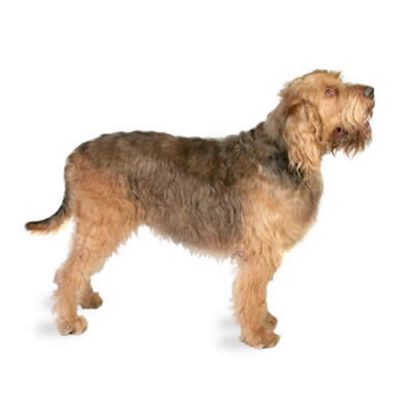Otterhound
Group 4: Hounds
Height:
Male: approx. 67 cm
Female: approx. 60 cm
Energy Level: Moderate
Original Function: Hunting
Lifespan: 10 – 12 yrs
Recommended for: Active people & families.
Note: Not many in Australia

Group 4: Hounds
Height:
Male: approx. 67 cm
Female: approx. 60 cm
Energy Level: Moderate
Original Function: Hunting
Lifespan: 10 – 12 yrs
Recommended for: Active people & families.
Note: Not many in Australia

The Otterhound is a rather old breed obtained from crossing among the Bloodhound with rough haired Terriers, Griffons and Harriers. The otter, as the breed’s name suggests, is this dog’s preferred prey. Otterhounds were used in packs for controlling the otter population, since otter competed with fisherman for the natural trout supply in rivers. In the late 1800’s there were sometimes more than a dozen packs operating in Britain during every hunting season.
They have a sense of smell so acute that it can smell in the morning an otter that passed through the water the night before. They are great swimmers with the ability to swim for hours without stopping. Defying the cold water and wet, it will dive into the water seeking its prey and its prey’s den.
In the 20th century, as the otter population diminished, so did the Otterhound’s popularity. By 1978, the otter became a protected species and the Otterhound’s existence was threatened.
They are a bold and exuberant dog, friendly, cheerful, loving and devoted, they make a good companion. They are quite good with children but may be clumsy with small children. They are a friend to all other dogs, family pets, children and people in general, however it will chase non-canine animals (it can get along with cats in the family).
They are affectionate, intelligent, and independent with a mind of their own because they were never traditionally kept as a pet, it is not among the most responsive of breeds. Training them takes patience, because they tend to be quite wilful. The best results are achieved with a soft but consistent hand. They like to roam and sniff and have a tendency to snore. They have a harmonious, boisterous and powerful voice that carries for long distances. Likes to bay but doesn’t bark excessively.
Appearance: Large, straight limbed & sound body. Majestic head with moderately deep set eyes. Ears are long and hang to the side of the head. Tail long, thick at base, tapering to point.
Temperament: Amiable and even-tempered.
Characteristics: Big, strong hound primarily built for long day’s work in water but able to gallop on land.
Colour: All recognised hound colours permissible: Whole coloured, grizzle, sandy, red, wheaten, blue; these may have slight white markings on head, chest, feet and tail tip. White hounds may have slight lemon, blue or badger pied markings. Black and tan, blue and tan, black and cream, occasional liver, tan and liver, tan and white.
Coat: Long 4-8 cm, (1.5″ – 3″), dense rough, harsh and waterproof. Softer hair on head and lower legs natural.
Grooming: To avoid matting, their weather-resistant coat should be combed or brushed at least weekly. They may need their beard washed more frequently. The coat is supposed to look natural and therefore should not be clipped. This breed is an average shedder.
Exercise: They need a lot of daily exercise in a safe area or on a leash, and if possible, frequent swimming. They have a tendency to forget everything in the chase after an interesting scent is discovered, so therefore they should only be allowed to run free off the leash where they can be controlled and kept safe.
Health: